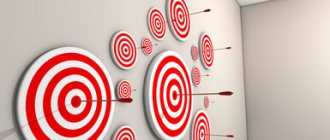© Andrey Maksimov
Fragment of the book Maksimov A.M. Pleasure of life and other habits of normal people. - St. Petersburg: Peter, 2021.
Each of us becomes a psychological consultant from time to time. We all constantly give advice to friends, relatives, relatives of friends and friends of relatives. The famous writer and TV presenter Andrei Maksimov came up with his own method, which he called Psychophilosophy. Psychophilosophy is a system of beliefs and practices that helps people help people. This is the fourth, most detailed and specific book on psychophilosophy.
Do not keep sweets, chocolate, cookies at home
Don't keep inflammatory foods in your house. You will definitely not win in the fight with yourself if something harmful keeps catching your eye and makes you think about how you want it and how you can’t have it.
At 10 pm, when you're sitting comfortably on the couch to watch a TV series, it will be much more difficult to motivate yourself to get up and go to the store when you want something sweet. Let laziness do the work for you, making it more difficult and inconvenient to “get” sweet/bad/high-calorie foods.
Get better 1% at a time
There is another way to overcome the inertia of rest - to change the habit very slowly, almost imperceptibly. Any sudden change in your usual lifestyle is perceived by the body as stress. It doesn’t matter whether it’s introducing a new, useful habit or trying to get rid of an old, unnecessary or harmful one. Agree, if you used to get up at 8 am, then when you hear the alarm ringing at 6:00 the next morning, you will most likely just turn it off. You will do this automatically, simply because your brain will cling to the old order of things and resist the new.
It will be much more effective to wake up 5 minutes earlier, and then add this time every day. It will be much easier for the body to adapt gradually. It's much easier to commit to practicing something for 5 minutes or less a day and get good at it, and then gradually grow from there.
Remember that at the first stage the main thing is not the amount of action, not the amount of time allocated for jogging or the pages of the book read. The main thing is to make the desired action automatic. And then you can increase the speed and turn a narrow path into a wide highway.
The 1% Rule is not just about overcoming initial inertia. It's also about consistency. Being 1% consistent is much easier than being 100% consistent.
Make preparations
Set aside a few hours on the weekend to make preparations that will save time during the week and relieve you of the desire to eat something high in calories. Vegetables: wash them, cut them and put them in the refrigerator. Store meat in portions, raw or cooked, in the freezer. Prepare the cereals for several days at once and package them in portions.
Step by step steps to form a habit
Forming a habit is a rather difficult and responsible process. It consists of several stages that must be completed. Now we will tell you how to do this step by step.
- Decision-making . To develop a habit, you need to understand that you really need it. Besides this, you still have to want to get it. Desire will control your actions and help you overcome the difficult period of 21 days. For example, you decided to eat only healthy and nutritious foods in order to lose weight, feel healthy and vigorous. In this case, when you want to eat sausages, your subconscious mind itself will stop you.
- Start . If you have a goal, then take action. Don’t put off such an important matter until “later.” Don't wait for a new week, month or good mood to come, because the habit will accompany you throughout your life.
- Repeat for the first two days . After you have started active actions, you need to hold out for the first 2 days. This is the initial distance that will have to be overcome.
- Repeat throughout the week . This is the second distance that needs to be covered. Every day, no matter what, perform the intended action. Habit formation does not include weekends and holidays.
- Repeat for 21 days. By doing the action during this period of time, you will realize that you are doing it automatically. That is, the process of forming a habit is already bringing the first successes.
- Repeat 40 days . It is necessary to continue to monitor the development of the habit after 21 days. After all, three weeks may not be enough. It depends on the complexity of the habit, motivation and individual characteristics of the person.
- Repeat for 90 days . After you complete the steps for exactly 90 days, you can say with great confidence that you will form a sustainable habit.
Organize your kitchen
Make the kitchen your assistant. Keep it as clean and comfortable as possible, so you feel relaxed when you walk in there. Keep vegetables and fruits in a visible place. Use the refrigerator door to remind you of your goals, track progress, and more. Buy new utensils or devices for cooking: grill pan or wok pan, steamer, etc.
Use social responsibility
One study examined the healthy lifestyle behavior of married couples in the UK. The results of observations showed that the habits of one of the spouses have a noticeable impact on the behavior of the other: if one of the partners goes for morning jogging, then with a high degree of probability the other will do the same.
Another study from the American Association for Training and Development (ASTD) found that making a commitment to another person increases the likelihood of achieving a goal by 65%. If you schedule a personal meeting to provide the report, the chances increase to an unimaginable 95%.
Achieving your goals takes time, hard work, and persistence. Often the results do not appear as quickly as you hoped. Often the initial charge of motivation is lost in the process and you give up. However, the need to give an account changes the situation dramatically.
The two main factors that influence the ability to achieve behavior change are incentives and accountability. The first ones pull you from the front, the second ones push you in the back. You simply have nowhere to go. “Changing deeply ingrained habits always requires real support from others,” say the authors of Change Anything: The New Science of Personal Success.
So, all you need to do is set a clear, measurable goal, outline a plan, and find someone to report to. Moreover, this may not only be a verbal commitment. You can also agree that if the goal is not met, you will pay a fine. It should not be too painful, but noticeable.
Such double motivation dramatically increases the likelihood of achieving the goal. The system of social interactions is activated. We fulfill obligations to other people (especially if they also have a price) more often than obligations to ourselves.
It is not necessary to find a specific person for this. Publicly declaring your intentions on a social networking page will be a great boost to your motivation. And it will not let the newly formed habit go off the rails.
More daily activity
Park farther from home or work and walk part of the road, at least in good weather. Get on city bikes. Do not use elevators and escalators - at least walk downwards. Make yourself an “extra 10 calories” rule: consider any need to go somewhere or do something as an opportunity to spend those extra calories and the benefits that they, added together throughout the day, can bring to your figure. Training in the gym is only an hour, so daily activity outside the gym is very important.
Why does it take 21 days for a habit to form?
This is a completely logical question that interests everyone who has set out to instill in themselves this or that habit. I wonder why not 30 days or 35, but rather 21 days? In fact, this number is scientifically based, but to understand why it takes 21 days to form a habit, you will be interested in knowing a few historical facts.
The first person to put forward the “21 days” theory was plastic surgeon Maxwell Maltz. In 1950, he noticed that his patients, after operations on their appearance, got used to their appearance only after 21 days. He described his hypothesis in the book “Psychocybrnetics”. After the doctor’s work was lauded by society, people started talking about the theory everywhere.
20 years later, psychologists from London questioned the claim that a habit is formed in 21 days. They conducted their study in which 96 volunteers took part. It lasted 12 weeks. Each was given a task to regularly perform some specific action. After the end of the experiment, after analyzing all the results, they found out that the period of habit formation is different for each person. This is determined by the individuality of each person. Getting used to performing a certain action occurs within 18-254 days.
Another study was carried out by American scientists on astronauts. 20 people took part in the experiment. Each of them was given glasses that they did not have to take off for 30 days. These glasses were special. The secret was in the lenses. When putting them on, the world turned upside down (in the literal sense of the word), that is, the astronauts saw an inverted image.
Scientists noticed that it was after 21 days that the brain of each of the experiment participants adapted. If the glasses were removed on the 10th or 19th day, then the experiment had to be started again, because the effect disappeared. After the volunteers got used to seeing the upside-down world, they were allowed to take off their glasses. After which their brains were rebuilt again for 21 days.
Many consider the results of US scientists to be unreliable, since the astronauts did not take off their glasses during the entire experiment, which lasted about 300 hours. If you rely on their results, then in order to accustom yourself to daily jogging, you will have to run for 21 days, interrupting only to sleep.
Having studied the results of all the studies conducted, we can say that a habit is developed in a minimum of 21 days, and a maximum of 254. This is influenced by many factors, which we will now talk about.
Summary
Trying to change anything in life, we are at war with thousand-year-old neurophysiological mechanisms. It’s not so easy to take them at a glance; it’s better to try to get around them. However, without the proper level of consistency, nothing will work. To overcome the initial inertia of rest, try starting a new habit on the crest of a motivational wave. At this point, create a system that simplifies all actions as much as possible. Get your running shoes ready for a run in the evening. Introduce changes gradually - stick to the 1% rule. Your task is to establish automatic behavior. You will improve it qualitatively later. Find someone who will control you. Social responsibility is a very powerful tool that increases the chance of achieving a goal by up to 95%.
Did you like the article? Join our communities on social networks or our Telegram channel and don’t miss the release of new useful materials: TelegramVKontakteFacebook
We also recommend reading:
- Storytelling
- How to develop good habits and get rid of bad ones
- Formation of useful habits
- How to stay motivated from a behavioral psychology perspective
- Strategy for overcoming bad habits
- 5 Mistakes When Forming New Habits
- Charles Duhigg "The Power of Habit" - summary
- Motivation: strategic leadership
- 21 magical days: how easy it is to develop a habit in three weeks
- How to determine the cycle of any habit
- Crisis is the path to progress
Key words:1Psychoregulation, 4Psychoregulation
Make your psychological portrait
Effective behavior design starts with habits, then identifies maladaptive strategies and gradually works with them. But you need to find them first: find out what stories a person tells about himself, how he sees himself - and what his actual strengths and weaknesses are. Often, unwanted behavior and lack of motivation are associated precisely with a distorted perception of oneself.
To objectively assess personality, Alexey Ivanov uses psychometry and draws up a psychological portrait of the client. This will allow you to understand a person’s values, determine in which environment he will be comfortable and in which he will not, which techniques and what motivation will work in his case, and which will be useless.
“Often a person thinks that he can be successful in everything - or, conversely, that he cannot be successful in anything: it depends on the degree of narcissism or self-criticism,” explains Alexey Ivanov. “But in reality, we often don’t understand who we are.” To determine strengths and weaknesses, I use, for example, the Hogan Assessment
is a professional test that American companies use when hiring employees.”
Such tests are interpreted by experts: they look not only at self-identification (how we see ourselves), but also at reputation (how others see us).
To create your own psychological portrait yourself, you can use simplified tests yourself. Of these, Alexey Ivanov recommends:
Hexaco
assesses personality according to six parameters: openness to experience, conscientiousness, extraversion, agreeableness, neuroticism, honesty. Hexaco was developed by scientists from the Canadian University of Calgary based on another popular questionnaire, the Big Five, to diagnose personality factors of temperament and character. The test is specialized, so it will take a long time to understand the results.
StrengthsFinder 2.0
identifies your strengths and weaknesses. It was developed by psychologist Don Clifton to unlock our natural talents, figure out what we do best—and focus on developing those areas. The scientific basis of the test is more modest than that of Hogan and Hexaco, but you don’t have to deal with interpretation for a long time.
MBTI
determines personality according to the Myers-Briggs typology, based on Jung’s archetypes (in Russia it is known in the version of socionics). The type is assigned depending on which parameters are more characteristic of you: introversion or extroversion, intuition or perception, feeling or thinking, assessment or perception. The MBTI is a popular test, but it is not considered scientific. But it is intuitive and does not require special knowledge for interpretation.
We also recommend the following well-researched tests: MMPI, Leonhard-Schmischek Inventory, Via Character, Big Five, and The TPAQ-45 Complete Personality Profile.
What else to read on the topic
Tiny Habits: The Small Changes That Change Everything.
Stanford behavioral psychology professor B.J. Fogg divides behavior into three components: motivation, ability, and triggers. If at least one of them is missing, changing the habit or consolidating a new one does not occur. Using the Fogg model, you can understand what exactly is missing for the desired behavior - and work with the problematic component. [Amazon]
Hooked: How to Build Habit-Forming Products.
Israeli investor Nir Eyal talks about the Hook Model and explains how to form a habit through a four-step sequence. [Book website]
Thinking, Fast and Slow.
Daniel Kahneman, winner of the 2002 Nobel Prize in Economics for his research on behavior under uncertainty, explains how the mechanisms of thinking cause us to act irrationally.
[Amazon, Litres] Cover: Anastasia Pozhidaeva











